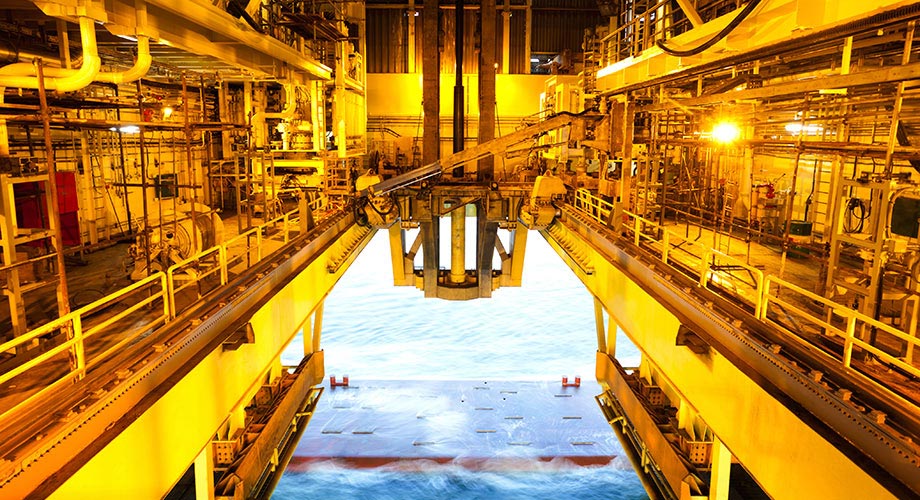Oil & Gas
ANGOLA: Angola's Downstream Development to Drive Domestic Capacity
Irene Jerry

Despite serving as the largest oil producer on the African continent, Angola has a minor downstream industry and currently imports approximately 80% of its refined petroleum. Consequently, one of the sub-Saharan African country’s Government’s main strategic targets is to increase domestic crude processing capacity.
With over 8.2 billion barrels of proven oil reserves and 13.5 trillion cubic feet of natural gas, Angola has the potential to operate as an energy hub for the region.
Angola’s National Oil Company (NOC), Sonangol, therefore aims to improve the country’s refining capacity through upgrades to the country’s sole operating facility, the 65,000 barrel per day (bpd) Luanda Refinery. Operated by energy company, Fina Petroleos de Angola, the refinery supplies products to the domestic market, yet falls short of meeting full demand of the population. To improve capacity, Sonangol has announced plans to upgrade the facility – with support from Italian energy major, Eni – through the installation of two additional processing units as well as other utilities and offsites, with EPC contract, KT-Kinetics Technology responsible for the engineering, procurement, and construction services for the upgrade.
This upgrade will involve an estimated mobilization of $235 million and will enable the refinery to increase fuel production four-fold to approximately 1,580,000 liters per day, thus reducing imports by up to 15% annually.
Meanwhile, Sonangol and the Government of Angola have sought to increase Angola’s downstream capacity through the construction of three new facilities. The Lobito Refinery, located in Lobito in the country’s Benguela Province, will have the capacity to produce 200,000 bpd and is scheduled to commence refining in 2025. The refinery is 70% owned by private investors and 30% by the NOC, with Sonangol having issued a call for tenders in 2021, with a number of private and public sector players relaying interest.
What’s more, the Cabinda Refinery will comprise a $920 million plant located in the Cabinda Province. The project will be developed by a joint venture comprising investment management firm, Gemcorp, and Sonangol subsidiary Sonaref, which will hold a 90% and 10% stake, respectively. As of May 2022, testing has been completed for the first phase of the project at oil and gas engineering service company, VFuel’s, fabrication site in Houston, Texas in the U.S. The facility will have a refining capacity of 60,000 bpd and will be able to produce petrol, diesel, Liquefied Petroleum Gas (LPG), fuel oil, and Jet A-1 fuel.
Sonangol is also constructing a refinery in Soyo, in the Zaire Province of Angola, with a total investment of $3.5 billion and which will be capable of processing 100,000 bpd. Developed by the U.S.-led Quanten Consortium – comprising American companies, TGT, Quantent, Aurum & Sharp, and Angolan company, Atis-Nebest – construction of the refinery began in 2022, with first production planned for 2024.
Furthermore, a Liquefied Natural Gas (LNG) storage and gas processing terminal situated in the Zaire Province has the capacity to process 360,000 cubic meters of LNG, LPG, and condensate. Projected to receive 1 billion cubic feet per day of natural gas, the project is poised to facilitate continued offshore development while reducing gas flaring and greenhouse emissions in Angola. Structured as a consortium – with Sonangol owning 22.8% while oil and gas supermajor Chevron, controls 26% and TotalEnergies, BP, and Eni each controlling 13.6% – the plant has the potential to supply Angola’s domestic market with up to 125 million standard cubic feet per day of gas while serving regional and international markets. With an investment of over $10 billion, U.S. companies Bechtel and ConocoPhillips have provided engineering and construction services for the facility.
Angola’s sole blending unit, which is owned and operated by Sonangol, supplies the country’s domestic market with mineral and synthetic oils and greases. Meanwhile, with a length of 1,400km and a proposed capacity of 1 million bpd, the Angola-Zambia Oil Pipeline is a proposed refined oil products pipeline that would run from the Lobito Refinery to Lusaka, Zambia. Operators of the pipeline will include Sonangol and Zambian pipeline company Baseli Balisel Resources.
Angola’s pipeline network also consists of the Angola LNG Pipeline System, which transports gas from the country’s offshore Blocks 0, 14, 15, 17, 18, 31, and 32 to the Angola LNG Terminal. With a length of approximately 500km and the capacity to transport 750 million cubic feet of natural gas per day, plans are currently underway to expand the pipeline to connect offshore Blocks 1 and 2 to the network.
Meanwhile, situated 60km from Angola’s capital city of Luanda, the country’s Barra do Dande Ocean Terminal is currently being developed by Brazilian conglomerate, Novonor subsidiary, Odebrecht Engineering & Construction. The terminal will have the capability to store up to 580,000m3 of petroleum derivatives including diesel, gasoline, and 102,000m3 of LPG for the domestic market. At a cost of $499 million, the project will result in Angola’s largest refined products terminal.
